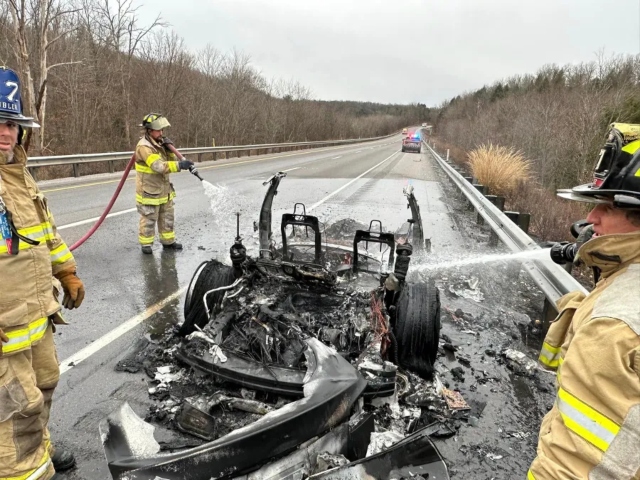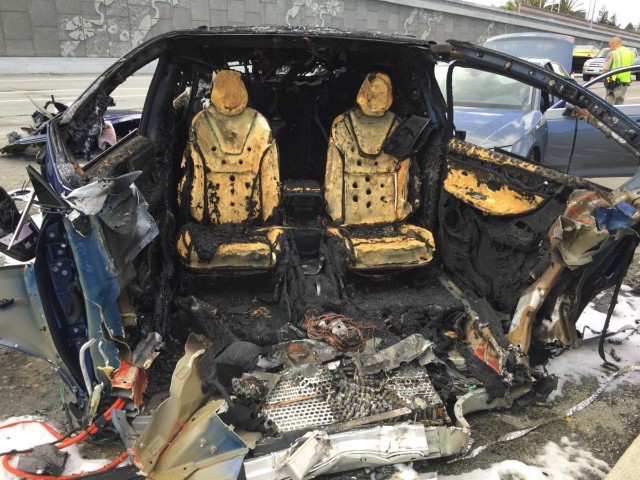A fatal Tesla crash in Spokane County, Washington, has sparked a renewed discussion on the safety and environmental implications of electric vehicles, particularly when they catch fire. One firefighter described the explosion of the electric vehicle built by Elon Musk as “an odd fire because it went off like bottle rockets.”
The Spokesman-Review reports that a farm in Spokane County was rocked by an explosion followed by a fire in June. The incident involved a Tesla vehicle that had crashed and caught fire, leaving the driver dead at the scene. “It was an inferno,” said Chris Mewhinney, a resident of the farm where the crash occurred. The incident has since become a focal point in a broader conversation about the safety and environmental risks associated with electric vehicles (EVs), especially Elon Musk’s popular Tesla EVs.
Firefighters were quick to respond but faced unique challenges in extinguishing the blaze. “It was an odd fire because it went off like bottle rockets,” Mewhinney noted. The electric nature of the vehicle, specifically its battery cells, made the fire more difficult to control. Rex Strickland, deputy fire chief at the Spokane Fire Department, emphasized the hazards, stating, “The smoke that comes off of an electric battery is really, really nasty. Tons of heavy metals, lithium cobalt – really a lot of things that basically never go away and are incredibly carcinogenic.”
The incident has raised questions about the preparedness of emergency services to handle electric vehicle fires. Chief Eric Olson of Spokane County Fire District 2 admitted, “The first thing that was really a big eye-opener for us is that we really didn’t have the ability to identify it as an electrical-vehicle fire.” The department has since updated its equipment and policies, including the purchase of specialized blankets designed to smother electric vehicle fires and reduce toxic emissions.
Beyond immediate safety concerns, the incident has also spotlighted the environmental impact of electric vehicle fires. Damaged battery cells from the Tesla still litter the farm, posing a risk to the environment and a logistical challenge for cleanup. “It just gets very tricky to move damaged batteries around,” said Megan Warfield, battery policy lead at the Department of Ecology.
Breitbart News has reported extensively on the danger of EVs. Last year, an op-ed in the Washington Post explained what makes them so dangerous:
The large-scale use comes with significant risks, although most modern power systems choose this formulation because it boasts higher energy density, as well as greater charging and discharging efficiency. However, lithium-ion batteries have a volatile, flammable electrolyte. So, while there are safeguards to avoid fires, all the combustible ingredients are still there. Flames can accelerate through chain reactions, known as thermal runaway.
Big batteries are made up of several cells packed together. Current is constantly flowing inside, which generates heat. If there are no barriers between the components, a failure in one part quickly cascades through. While elaborate (and critical) equipment for cooling the system is put in place, it draws on the energy of the actual powerpack and reduces its output. In addition, when charged, a coat of lithium metal can form on the surface and dendrites, or needle-like structures can grow, and lead to short-circuits.
There are other considerations, too. For instance, in its review of battery failures in 2019 and 2012, the Arizona State Commission pointed to reports of “fires with 10 feet to 15 feet flame lengths that grew into 50 feet to 75 feet flame lengths appearing to be fed by flammable liquids coming from the cabinets.” After one incident, it took nearly three months to discharge the stranded energy.
Read more at the Spokesman-Review here.
Lucas Nolan is a reporter for Breitbart News covering issues of free speech and online censorship. Follow him on Twitter @LucasNolan



COMMENTS
Please let us know if you're having issues with commenting.